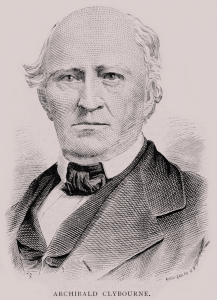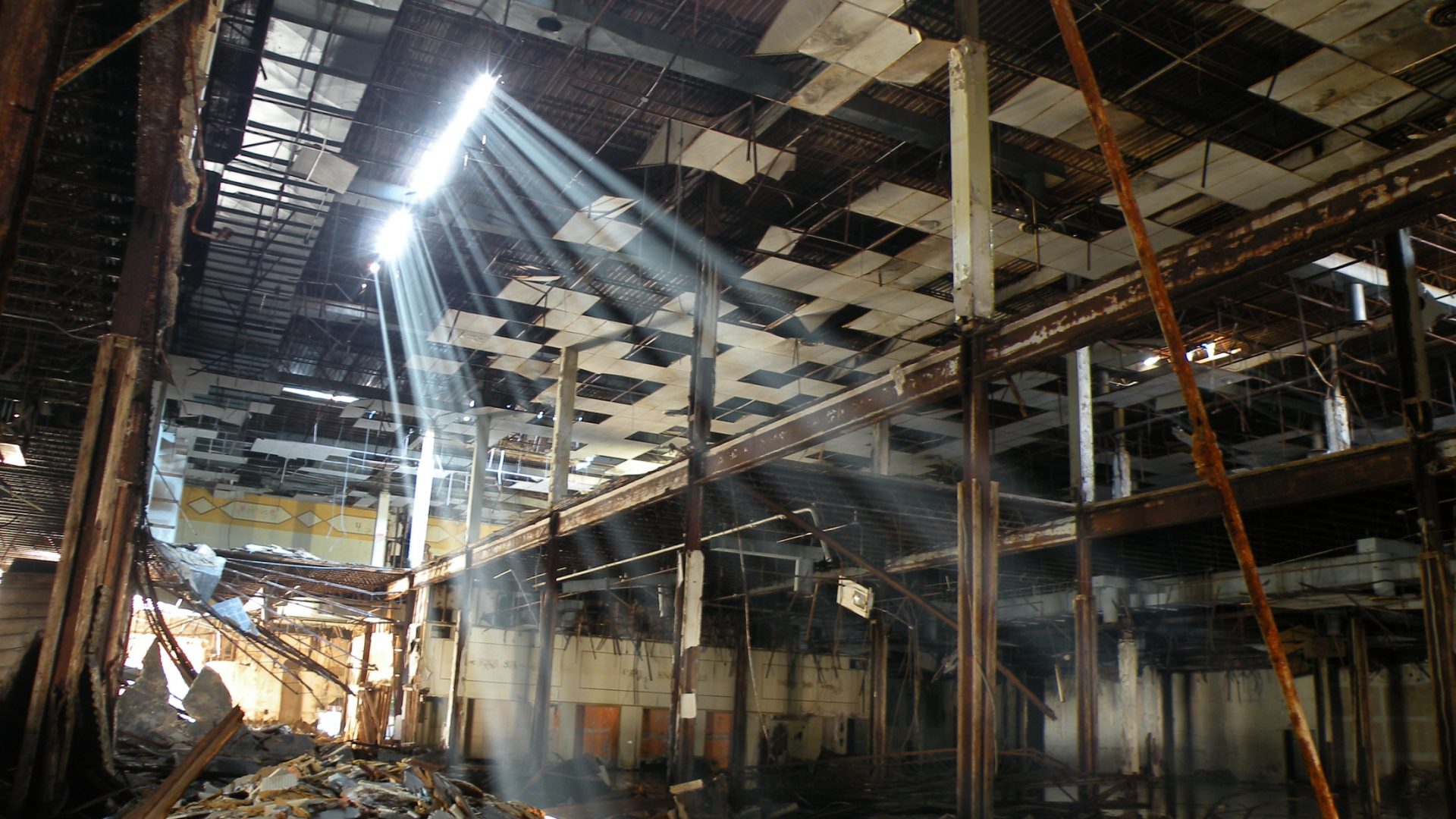| Origins | Settled by Archibald Clybourne in 1823 and annexed in 1889 |
|---|---|
| Area | North Side |
| Boundaries | Diversey Parkway on the north, North Avenue on the south, Lake Michigan on the east and the Chicago River on the west |
| Gangs founded | Insane Deuces, |
| Gangs headquartered | Simon City Royals, Latin Kings, |

Lincoln Park was first settled in 1823 by Archibald Clybourne (pictured, left) as he built a slaughterhouse on present day Elston Avenue. There was also a military post built there right around the same time that branched from the nearby Fort Dearborn. Yes, Clybourne Avenue was named after Archibald Clybourne.
In the year 1837 plots of land were sold and many more houses were built in the area turning this into a community that mostly comprised of German immigrants. The “City Cemetery” and also a smallpox hospital was built that same year.
The land was basically an area of misery in the early days until the 1850s when wealthy elites complained about the pollution and overcrowded grave sites. It was an unattractive and nasty area; therefore, in 1863 the cemetery was removed and made way for a public area. The area was named “Lake Park,” then in 1865 it was renamed “Lincoln Park” named immediately after the assassination of President Abraham Lincoln. The Great Chicago Fire of 1871 damaged the majority of the Lincoln Park area and rebuilding happened after this. Part of the rebuild was the creation of the Lincoln Park Zoo that opened in 1874.
In the year 1889 Lincoln Park was officially annexed into the City of Chicago. After the fire Lincoln Park experienced the migration of Polish, Romanian, Italian, Hungarian and Slovak working-class residents that settled along the west side of Lincoln Park which gave the neighborhood a working-class element.
In the 1930s the working-class element of Lincoln Park became downtrodden by the Great Depression era and homes and apartment buildings began to be neglected for repairs and renewal. The area would continue to see some deterioration in west Lincoln Park especially through the 1940s and 1950s. The earliest wave of Puerto Rican migration moved into this western part of the neighborhood in the late 1940s and early 1950s.
In the year 1959 when construction caused urban displacement in the Near West Side neighborhood, scores of more Puerto Rican migrants moved into the west side of Lincoln Park primarily. The removal of the “La Clark” settlement in the old Town section of the Near North Side neighborhood also brought more Puerto Ricans to Lincoln Park. The more deteriorated homes and apartments made for cheaper rent which was all the poorer Puerto Rican migrants could afford, but as soon as they arrived they were met with animosity and hate from those that wanted the area to remain an all-white neighborhood, this led to the formation of one of the earlier Puerto Rican street gangs the “Young Lords.” The Young Lords were the most violent gang in Lincoln Park in their early years.
Not only were there impoverished Puerto Rican families there were also several impoverished white families living in Lincoln Park and by the 1960s Lincoln Park was having an issue with poverty-stricken residents.
Beginning in the year 1960 many Puerto Rican youths organized social athletic clubs and other clubs that allowed them to stay in larger numbers and avoid attacks from hostile groups. The Young Lords were the first to become a gang in 1959 then by 1960 more groups either converted into gangs or started off as gangs. Groups like the Paragons was a notable group.
In the year 1960 Lincoln Park began urban renewal programs that geared at removing the newly arrived Puerto Rican people out of Lincoln Park. Movements tried to prevent this forced migration from happening in the earlier 1960s but by 1964 several Puerto Ricans were forced out and the Young Lords street gang spread elsewhere while still keeping their headquarters in this community at the intersection of Armitage and Sheffield.
In the year 1966 the Latin Kings arrived and took the intersection of Armitage and Dayton. The Latin Kings arrived to deal with social injustices the Puerto Rican people faced but ended up getting into conflicts with the Young Lords.
By 1966 more of the Puerto Rican populace was removed by urban renewal which pushed out most of the remaining Puerto Rican populace into West Humboldt Park or West Town. This was a turning point for the Young Lords as they made peace with the Latin Kings and no longer were considered a street gang. Young Lords then gave their territory to the Latin Kings because they were no longer functioning as a gang. In 1966 the Young Lords became a social justice group that spoke out against the mistreatment of Puerto Rican people by the police and urban renewal projects that pushed Puerto Rican people out. The Young Lords were able to slow down Puerto Rican evictions from the community.
In the year 1971, the Insane Deuces formed in the Lathrop projects that were partially located in the borders of Lincoln Park. The Insane Deuces would then become one of Lincoln Park’s gangs.
In the year 1974, the Insane Unknowns settled in this community beginning at Lincoln and Wrightwood. The Insane Unknowns initially had a rivalry with Latin Kings after arrival.
In the year 1975, the Insane Deuces donated much of their territory in the Lathrop projects to the Latin Kings. This donated land was south of Diversey Parkway which falls within the Lincoln Park borders. Now Lincoln Park had another section of Latin Kings.
In the year 1976 the Simon City Royals established territory in this neighborhood. The Insane Unknowns were allies with the Royals and welcomed them there. The Unknowns then formed the Halsted and Wrightwood territory that Simon City Royals had wanted. The Royals then started a war with the Unknowns and the Unknowns drew closer to Latin Kings. The later 70s Simon City Royal and Insane Unknown wars became legendary as now Lincoln Park was a little dangerous of an area. When going to the Lincoln Park Zoo the area had become sketchy with gang graffiti and some seedy activity. The Lathrop projects were fairly peaceful since Latin Kings and Insane Deuces shared them well.
In the 1980s the Insane Unknowns and Simon City Royals carried on their bloody gang war as these two groups were some of toughest groups in the city. Considering how Lincoln Park is in current years, it can be hard to imagine this level of gangbanging once happened here. In the projects Deuces and Kings were still in harmony battling outsiders and Royals but in 1989 the two groups went to war.
In the year 1992, the Insane Deuces left the Lathrop projects as Latin Kings took that part of the projects over. The Black P Stones and Conservative Vice Lords arrived in the 1990s and settled among Latin Kings in the southern part of the projects. This brought Black P Stones and Conservative Vice Lords to Lincoln Park.
As the 1990s progressed the Lincoln Park community became gentrified as young urban professionals became increasingly interested in this neighborhood. The gang activity declined year by year in the 90s as gentrification grew.
In the 2000s decade and later gang activity has become minimal as Lincoln Park is one of the most expensive neighborhoods in the city.
In the 1960s this neighborhood was dominated by Young Lords and Latin Kings.
In the 1970s and 1980s Latin Kings, Simon City Royals and Insane Unknowns dominated this neighborhood.
In the 1990s Insane Unknowns and Simon City Royals dominated this neighborhood.
In the 2000s and later some Simon City Royal element remained. In the projects Latin Kings would remain until the 2010s.
Those of you from the young urban professional class may be interested to know these gangs once walked these streets:
Latin Kings Established 1966-2010s
Armitage & Sheffield
Armitage & Dayton Established 1966
Clybourn/Damen to Leavitt/Hoyne (Lathrop projects) Established 1975-2010s
Simon City Royals Established 1976-2010s
Fullerton & Southport Established 1976-2010s
Ashland & Wrightwood Established 1976-1990
Conservative Vice Lords
Clybourn & Sheffield
Insane Deuces Established 1971-1975
Clybourn/Damen to Leavitt/Hoyne Established 1971-1975 (Lathrop projects)
Insane Unknowns Established 1974-2000s
Ashland & Wrightwood Established 1990-2000s
Lincoln & Wrightwood Established 1974
Orchard & Drummond Established 1976-2000s
Halsted & Wrightwood Established 1976
Black P Stones 90s, 2000s
Clybourn/Damen to Leavitt/Hoyne (Lathrop projects) 90s, 2000s


